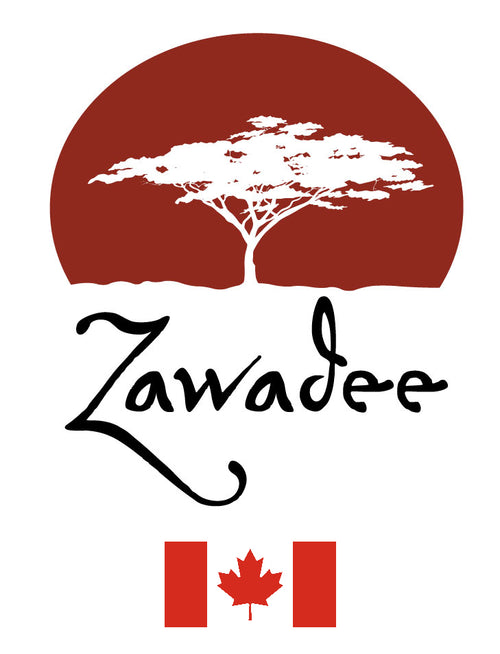One of the most popular and fascinating forms of Makonde art is sculpture – especially
Makonde sculptures Makonde sculptures. These pieces have become extremely popular today with art collectors and homeowners alike. Considering they come in many shapes, sizes, and types of carvings, it’s not surprising they are popping up all over the world.

Like any other piece of art, the history and origins of the Family Tree Style sculpture only adds to its intrigue.
Origins of Family Tree Style Sculptures
The Family Tree Style sculptures, which are also referred to as “Tree of Life,” date back to the late 1950s and an artistic style called Dimoongo – one of the eight major Makonde styles.
Professor Elias Jengo explains:
“A style called Dimoongo (power of strength), which a local political zealot later named Ujamaa, was introduced by the late Roberto Yakobo Sangwani who migrated into Tanzania from Mozambique in the late 1950s. The original style represented a winner in a wrestling match who was carried shoulder high by his colleagues represented in a cluster of figures. Some later versions were carved showing a female figure at the top of a cluster of figures. This was the beginning of a style known as the Makonde family tree.”
With a history of name changes, tracking the Makonde Family Tree sculptures can be a little confusing for the average person. Dimoongo, Ujamaa, and Tree of Life all refer to the same style of art.
Learn more about the eight Makonde art styles here
Significance of the Makonde “Family Tree”


Even though these carvings have been known by a number of different names, the significance and meaning of the carvings have remained the same over the years.
Ujamaa means community and family. This meaning is also echoed in the “Tree of Life” pieces which speak to a common human ancestral heritage. This is why you often see symbols of support and generations of family. Overall, the piece brings out the community harmony the Makonde people strongly believe in.
Common Characteristics and Depictions
The sculptures, while they can take on a variety of shapes, forms, and sizes, have a number of common characteristics representing the symbolism and significance of the carvings. The carvings typically include:
- A column of people, with one central figure surrounded by smaller figures
- One large figure at the top of the pole – often a central figure such as a tribal chief. More modern carvings typically have a female figure at the top
- They commonly depict members of extended family – often representing multiple generations
- People are often depicted climbing or holding each other up (representing support)
- People are often shown performing traditional tasks and local work such as cooking or farming
 About the Artists and the Canvas
About the Artists and the Canvas
Family tree sculptures can be as tall as 6 feet, taking artisans up to 9 months to complete. However, they also come in many other sizes, ensuring you can find the perfect carving for your home or office decor.
- The sculptures have become popular because of their intricate design and decor.
- They are carved from African blackwood (also known as mpingo)
- High quality pieces are carved from a single large tree trunk
What really communicates the beauty of these carvings is their unparalleled, intricately detailed and delicate shapes, making these sculptures highly desirable.
Please take a few moments to explore our collection of Family Tree Style Sculptures. They are fascinating pieces, deeply rooted in history.
Bring a piece of Africa home with you today. Add a Family Tree Sculpture to your home or office. A unique and fascinating accent, they are also great conversation starters!








 About the Artists and the Canvas
Family tree sculptures can be as tall as 6 feet, taking artisans up to 9 months to complete. However, they also come in many other sizes, ensuring you can find the perfect carving for your home or office decor.
About the Artists and the Canvas
Family tree sculptures can be as tall as 6 feet, taking artisans up to 9 months to complete. However, they also come in many other sizes, ensuring you can find the perfect carving for your home or office decor.
 The Popularity of African Sculptures
The way we choose to decorate our homes today is very different than how our parents’ homes were decorated. While art has always been an important part of décor, it is more common today for homeowners to take more leeway, often incorporating unique and eye catching pieces of art. As a result, African sculpture is more frequently encountered in home decor.
Why? African sculptures have a unique look, are available expertly handcrafted and lend themselves well to becoming a focal point of a room. African sculpture and art can give your home a distinct look and feel.
The Popularity of African Sculptures
The way we choose to decorate our homes today is very different than how our parents’ homes were decorated. While art has always been an important part of décor, it is more common today for homeowners to take more leeway, often incorporating unique and eye catching pieces of art. As a result, African sculpture is more frequently encountered in home decor.
Why? African sculptures have a unique look, are available expertly handcrafted and lend themselves well to becoming a focal point of a room. African sculpture and art can give your home a distinct look and feel.



